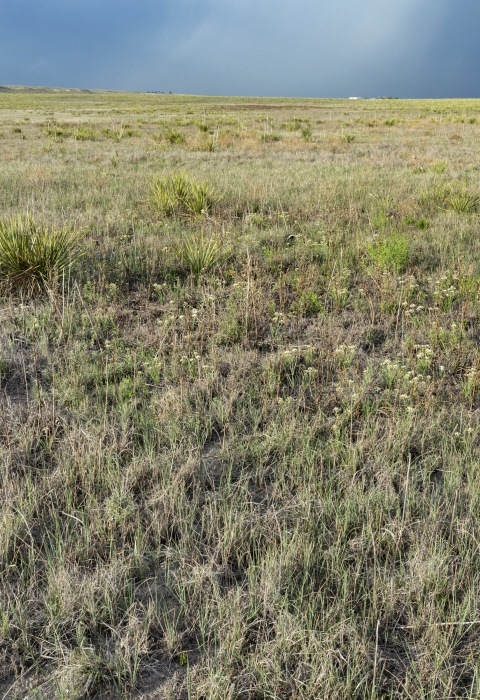About Us
Buffalo Lake National Wildlife Refuge was first purchased in 1937 by the U.S. Department of Agriculture (USDA) in order to develop the Tierra Blanca Water Conservation Project. The USDA purchased the lands as a water supply and to provide recreation for the region.
In 1938, Umbarger Dam was built and with it came the creation of Buffalo Lake. The Lake got its water supply from Tierra Blanca Creek, which was supplied by runoff from rain and natural springs. Utilized by significant numbers of waterfowl and other migratory birds on the Central Flyway, the arid landscape became even more valuable with the creation of the lake. In 1958, the project was transferred to the Department of Interior and one year later became the Buffalo Lake National Wildlife Refuge. Managed for the benefit of wildlife, the refuge had an establishment purpose of providing quality habitat for birds wintering at Buffalo Lake Refuge.
In the 1970s, Tierra Blanca Creek and the natural springs that fed into it dried up due to over consumption for agriculture and urban uses. Today, Buffalo Lake is typically dry and only receives water during major storms that flood Tierra Blanca Creek.
Though its namesake lake is dry, the 7,664-acre refuge encompasses a variety of habitats important to many species of wildlife, including short grass prairie, riparian riparian
Definition of riparian habitat or riparian areas.
Learn more about riparian , and woodland habitats. Visitors can enjoy wildlife-dependent recreation, including wildlife watching and photography, environmental interpretation and education, and hiking.
Buffalo Lake National Wildlife Refuge is part of the National Wildlife Refuge System, a national network of lands and waters that have been set aside for the benefit of wildlife and you!
Our Mission
The mission of the National Wildlife Refuge System is to administer a national network of lands and waters for the conservation, management and, where appropriate, restoration of the fish, wildlife and plant resources and their habitats within the United States for the benefit of present and future generations of Americans.
Our Purpose
Every national wildlife refuge national wildlife refuge
A national wildlife refuge is typically a contiguous area of land and water managed by the U.S. Fish and Wildlife Service for the conservation and, where appropriate, restoration of fish, wildlife and plant resources and their habitats for the benefit of present and future generations of Americans.
Learn more about national wildlife refuge was created for a special purpose. Some were created to protect migratory birds, others to protect threatened or endangered species or unique habitats, while others fulfill another special purpose. Refuges are special places where wildlife comes first. All activities allowed on refuges must be evaluated to make sure each activity will not conflict with the reason the refuge was founded.
Our History
1937- The U.S. Department of Agriculture purchased land under the Bankhead-Jones Farm Tenant Act.
1938 - Umbarger Dam was built creating Buffalo Lake. The lake provided water and recreation for the region.
1958 - Buffalo Lake was transferred to the Department of Interior.
1959 - Buffalo Lake National Wildlife Refuge was established.

